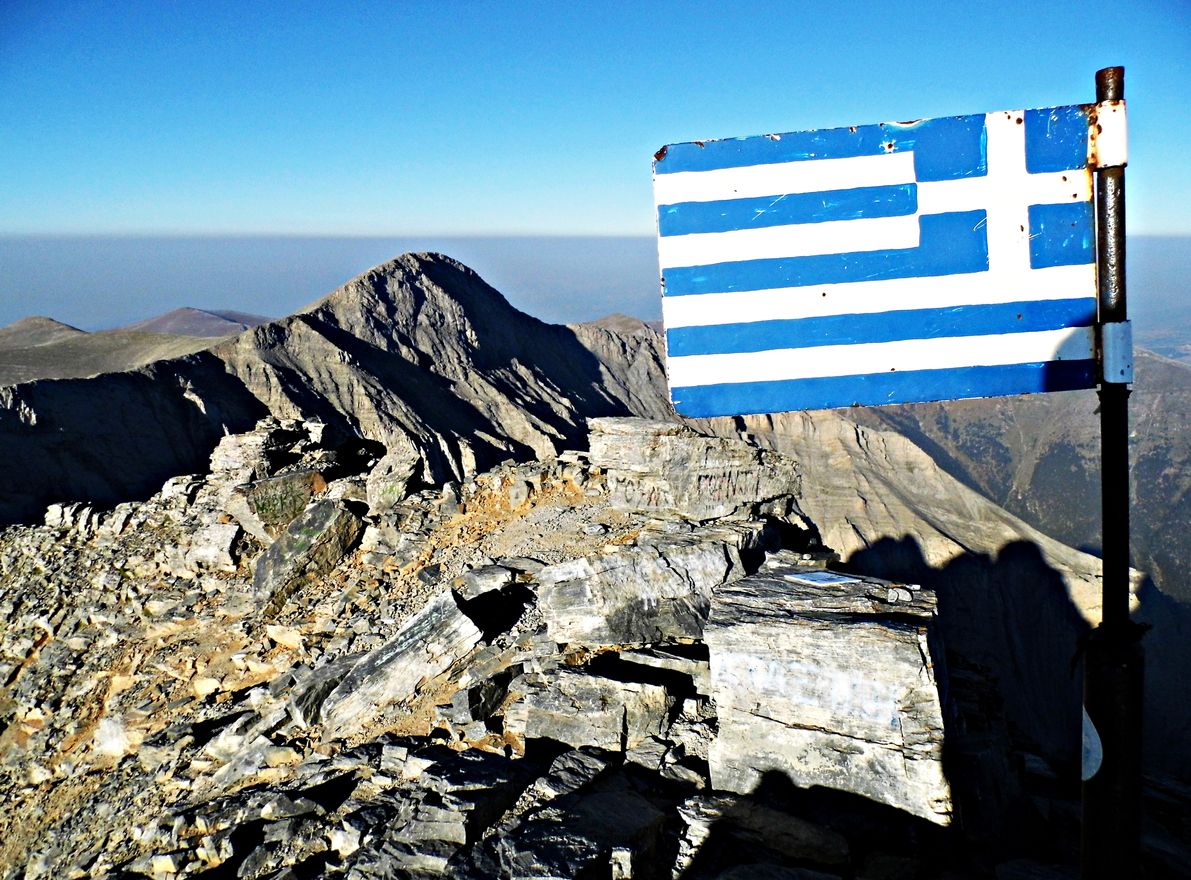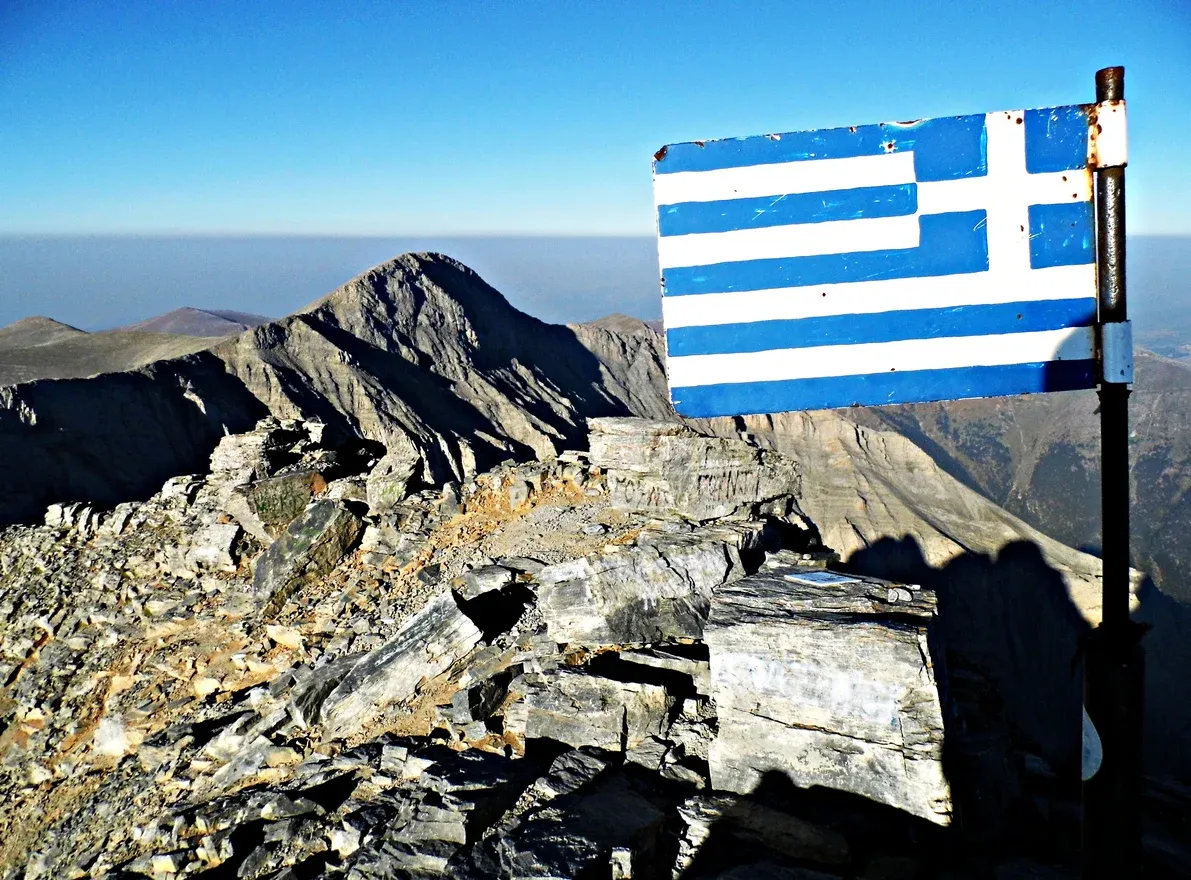
Mount Olympus is the highest mountain in Greece, at 2917m tall. It’s also one of the highest peaks in Europe in topographical terms (measuring the height relative to the lowest contour line encircling it) and, of course, it's home to the 12 Olympian gods of the ancient Greek world. You know; Zeus, Hera, Poseidon and all that lot. Bunch of troublemakers, if you ask us.
"It's a very attractive mountain," says Athanasios Pitenis, a local mountain guide with a wealth of experience on Mount Olympus. "When you spend time here, around it, you just want to go up. You have the mythology, which makes it so different to other mountains - the 12 Gods and the throne of Zeus, and then the Greek hospitality, the hiking tour and the environment and people here."
Mythology and Mount Olympus are one and the same. When you start hiking up you feel all of this - the 12 Gods, the Enipeas River, the peaks.
Not only has Athanasios been up to the summit of Mount Olympus more than 100 times - he's also a graduate of the School of the Hellenic Federation of Mountaineering and Climbing, and has done specialised training in tourism management, local development and mountain guiding. All of which is to say, Pitenis has down the Mount Olympus hike a lot of times.
"I was born at the foot of the mountain," Pitenis tells me. "Now I'm a professional mountain guide - so I have lived all of my life around this mountain. It's different everytime and for me, that's what makes Mount Olympus so special."
Mount Olympus actually has 52 peaks. The 2,917m summit is called Mytikas and is challenging to reach, requiring tough scrambling. Skala Peak (2,882m) and Skolio Peak (2,911m) are also commonly climbed. The mountain is situated in Olympus National Park, which became the country's first national park when it was declared as such way back in 1938. It's also a World Biosphere Reserve.
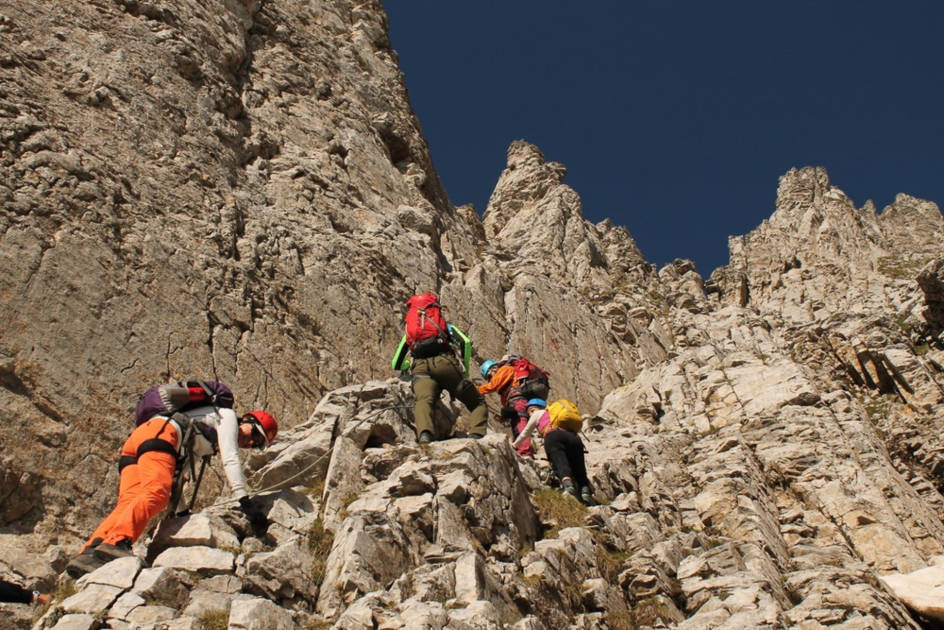
The mythology and magnitude of Olympus make this a mountain like no other; drenched in romance and beauty that goes beyond the Mediterranean views.
This article is a guide to climbing Mount Olympus, as well a look into the fascinating mythical history of the mountain. It’s important to note that any route descriptions are only short summaries, designed to inspire but not to serve any navigational purpose. To stay safe on the mountain, hire a local guide.
Where is Mount Olympus?
Mount Olympus is located in the Olympus mountain range in northern Greece.
Specifically, Olympus is on the border between the regions of Thessaly and Macedonia, between what are known as the "regional units" of Larissa and Pieria.
To the northwest of Mount Olympus, meanwhile, you’ll find the villages of Kokkinopoulou, Petra, Vrontou and Dion. To the southeast, the Ziliana gorge divides Mount Olympus from the Lower Olympus mountain and the Agiga Triada Sparmou Monastery can be found to the west of the mountain.
How to get to Mount Olympus? The gateway city is Thessaloniki 50 miles (80km) northeast of Olympus. It's the second largest city in Greece and it's gorgeous - sitting on the coast. From Thessaloniki, hikers usually transfer to the small town of Litochoro (a name which loosely translates as “the city of the gods), at the base of Olympus, before heading off to the trailhead at Prionia.
Athens, the capital of Greece, is about six hours south of Mount Olympus.
Best Time to Climb Mount Olympus?
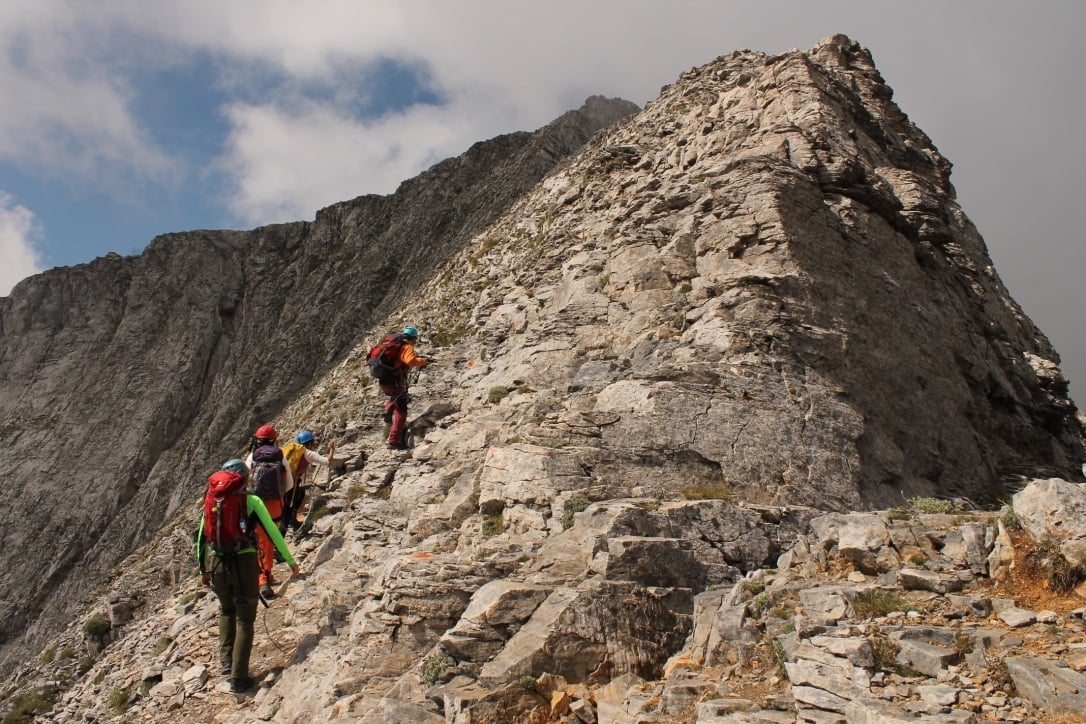
The tourism season on Mount Olympus is relatively short compared to other mountains. The trekking season runs from June to the end of October.
Mount Olympus has a Mediterranean climate, meaning it’s hot and dry in the summer and humid and cold in the winter. The winters can be severe.
Speaking generally, the temperatures range from -10°C to 10°C, while in the summer temperatures go from 0°C to 20°C. It often snows throughout the winter, though rain and snow is also not unheard of in the summer. Over the 2000m mark, the mountain is actually snow-capped for around nine months of the year, from September to May. The north slopes receive more rainfall than the northwest slopes and so the scenery can be quite different between the two.
"What's very important is that you read the kit list and bring the right equipment," says Athanasios. "When we give our pre-trip briefing, we'll inform everyone about the weather and temperature and we'll check their equipment too. If you need something, you can then rent it. It's very important to be 100% prepared for the mountain. Without the right equipment you can't go up. It's safety first."
Who Was the First Person to Climb Mount Olympus?
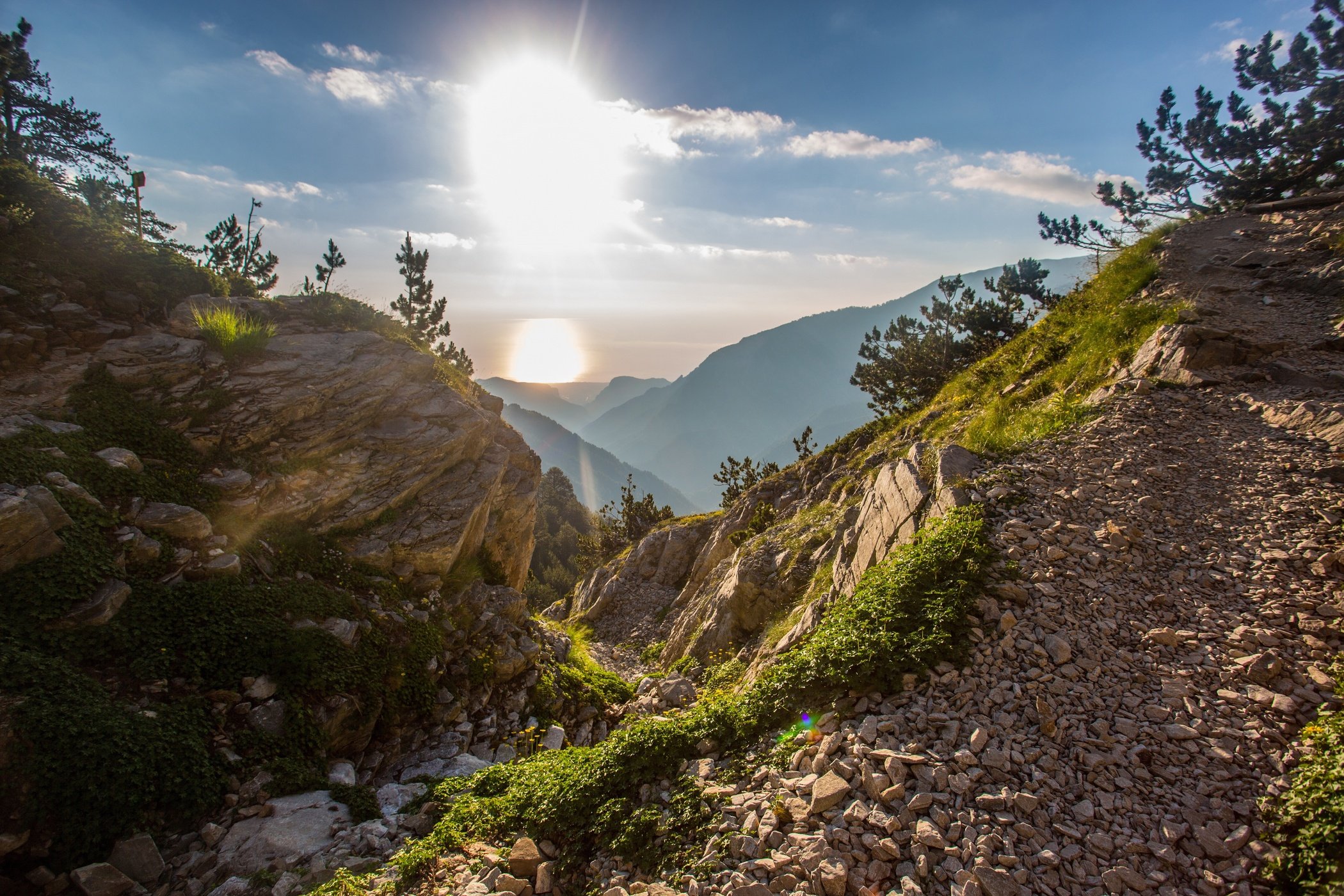
Mount Olympus has a history as ancient as the country in which it sits. The mountain was formed of sedimentary rock, moulded by glaciers over one million years ago and shaped by wind and rain. People have been climbing the mountain for hundreds of years, too. Archaeological findings on Mount Olympus have shown that the third highest peak on the mountain, Agios Antonios, was once the site of a sanctuary to Zeus. All of which is to say that it is likely that someone, at some point, reached the summit of Mytikas before the modern day.
Richter was abducted by bandits while climbing Olympus, and the Ottoman guards travelling with him were reportedly killed.
In the modern age of exploration and mountaineering, the German engineer and climber Edward Richter was one of the first to try and reach the higher summits of the mountain in 1911. It didn't go to plan. Richter was abducted by bandits while climbing Olympus, and the Ottoman guards travelling with him were reportedly killed. A newspaper report from the time stated that Richter was later "discovered safe and well at a place on the Greek frontier" but, rather unsurprisingly given the aforementioned abduction, he didn't reach the summit.
Mytikas was eventually reached on 2 August 1913, one year after the liberation of northern Greece from Ottoman rule. The men who reached it were Swiss climbers Frédéric Boissonnas and Daniel Baud-Bovy, guided by Christos Kakkalos – a local hunter from Litochoro. Not to be shown up by the tourists, Kakkalos was the first man to actually summit Olympus. He then spent the rest of his days working as a guide on the mountain, until he passed away in 1976.
Climbing Mount Olympus: The Two-Day Route
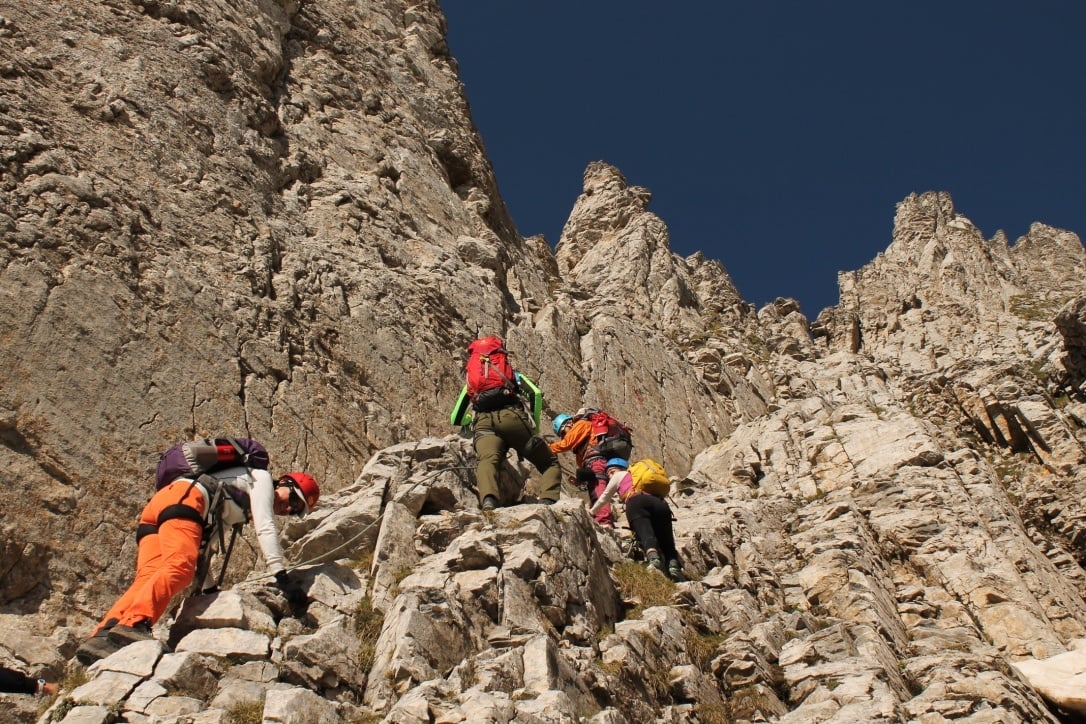
The Mt Olympus hike typically takes two days to climb, with one night spent in a mountain refuge along the way. Of course, there are a variety of routes and a variety of mountain refuges on Olympus, but the majority of those climbing the mountain start from the town of Litochoro and follow the road to Prionia where the hike begins. We'll describe one particular route, with input from our expert guide Athanasios Pitenis from here.
"We hike to the top in two days," says Athanasios. "The first night we reach the MusesPlateau, at 2600m." The second day then takes you to the summit and back down again. Before we get into the details, it's important to know a few basics.
Olympus: Should I climb Mytikas or Skolio Peak?
The majority of the Mount Olympus ascent isn’t a technical climb, but the finale can be tricky. The final section of the climb, from the summit of Skala Peak at 2,882m to the peak of Mytikas at 2,918m is categorised as a YDS (Yosemite Decimal System) Class III rock scramble. For context, a Class III is defined as: “Scrambling with increased exposure. Handholds are necessary. A rope should be available for learning climbers, or if you just choose to use one that day, but is usually not required. Falls could easily be fatal.”
The final section of the climb, from Skala Peak at 2,882m to the peak of Mytikas at 2,918m is categorised as a Class III rock scramble.
Basically, it’s trickier than your average ascent and it can be vertigo-inducing.
An alternative route, if you’re not up for the scramble, is to take a narrow ridge line over to Skolio Peak, which is at 2,911m. A lot of people do this. While nearly 10,000 people climb Mount Olympus each year, the vast majority only reach the Skolio summit. On our climb up Mount Olympus, we offer the option to summit Mytikas (weather permitting) – but Skala Peak or Skolio Peak are also summit options.
Regardless of your preference, weather may take the choice out of your hands.
"The most important thing for me and my team is always safety," says Athanasios.

"We check the weather two days before so that we have a plan, but sometimes the weather changes. From Muses Plateau, often on one side we have sun and on the other rain. If we climb Mytikas, we'll have a guide for every 3-4 people. We use safety equipment - helmets and harnesses and ropes - and we approach the couloir of Mytikas step by step.
"If someone doesn't feel well approaching Mytikas, or doesn't want to, then we can help to approach Skolio - which is completely different. This is a smoother peak. You don't need equipment and you don't need to scramble. For the last part of Mytikas it is scrambling - not climbing, but scrambling. This is the difference. Mytikas is the highest peak and you must use equipment. You must not be afraid of heights. Skolio is more like hiking."
Either way the views of the rugged outline of Olympus are stunning.
Day One: Litochoro to Giosos Apostolidis Hut or Christos Kakkalos Refuge
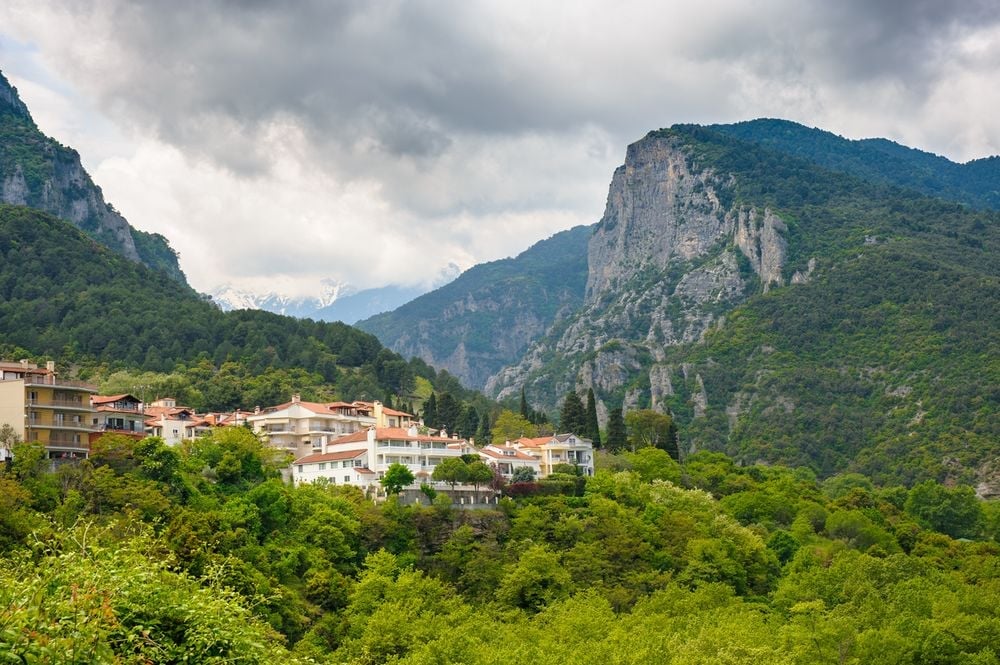
- Distance: 12km
- Walking Time: 6-9 hours
- Ascent profile: 1,600m up
"The trail starts from Prionia at 1,100m," says Pitenis. "That's where we park our mini vans and prepare for the hiking. We start along a route called the E4, which is a long-distance European path, and that continues up to the Spilios Agapitos Refuge at 2,060m. The first part of the day is 6.5km with more than 1000m ascent. It's in forest terrain, then after two hours, the trail mixes forests and rocks."
The forests are majority black pine, Athanasios says. "Then after 1,600m we have robelo, which is a kind of Bosnian pine, different from other black pine forests." There are also fir and birch trees, before you emerge out at the alpine zone."
We start the day hiking through black pine forest and we overnight in alpine meadows without forest - only high peaks, stones, flowers and the stars around.
This part of the trail is the busiest you'll see on the mountain and it’s likely you’ll meet plenty of other hikers from around the world as you hike.
You’ll continue on from the refuge, and from here, you'll find yourself on switchbacks, zig-zagging up Mount Olympus, climbing above the treeline to get your first view of the rugged, spiking summits of this remarkable mountain.
"It's a medium difficulty. We need three to four hours to approach the Agapitos hut." Here, you can refill water bottles and grab a snack or drink before continuing. "This is the biggest and most organised mountain hut in Greece."
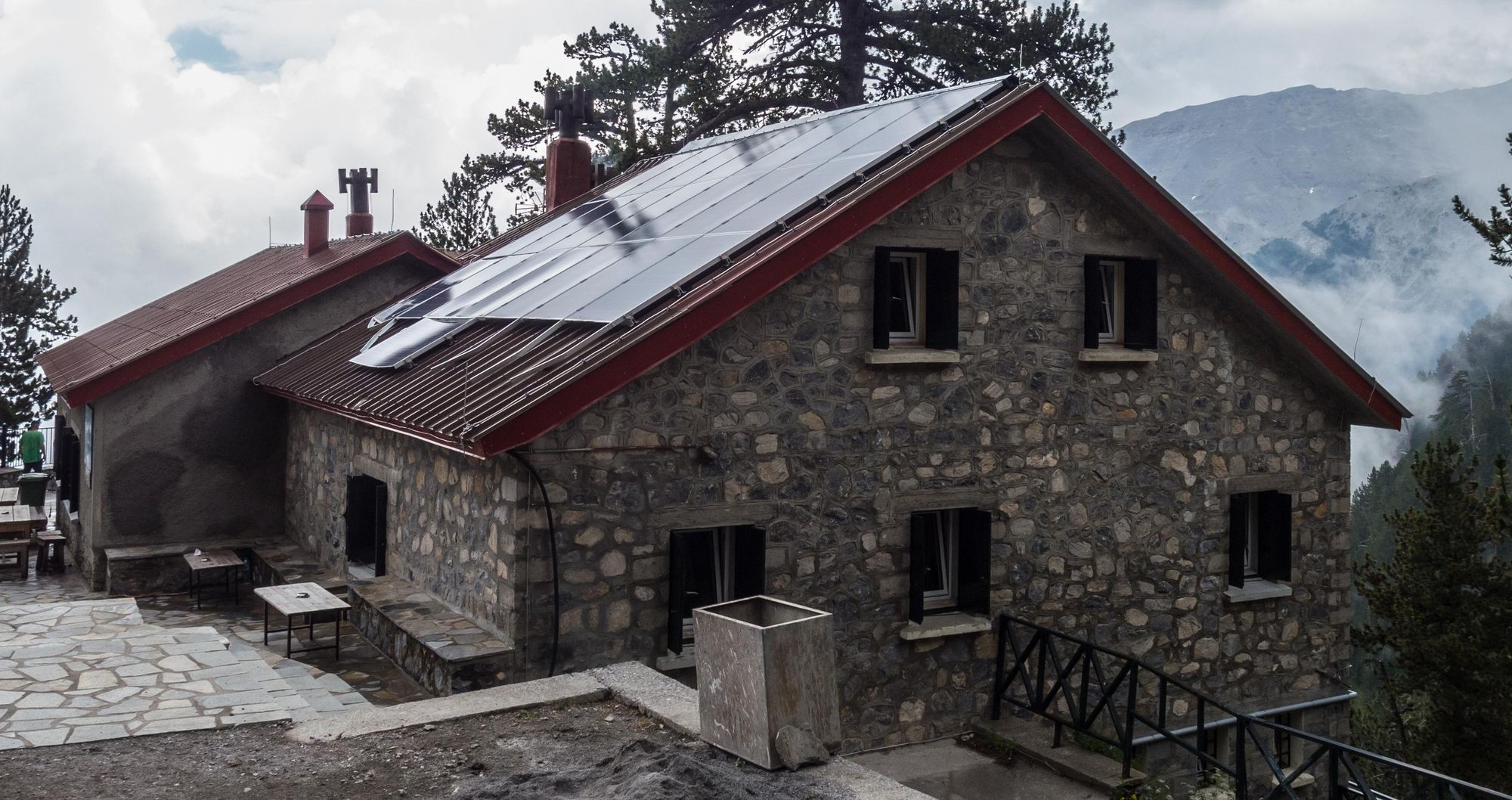
You'll take hourly breaks while hiking to take in the scenery and learn about the mythology from your guide. You'll pass above the forest zone at 2,200m and then you'll leave E4 and join the Zonaria path. "Zonaria is a very famous, rocky path in the alpine zone of the mountain," says Athanasios. "You have amazing views. On your right hand, you look down to the robolo forests, over the national park and to Litochoro and the Aegean Sea. And on your left hand, you have the highest peaks of the mountain - like Scala, the fourth highest, and Mytikas."
You'll stay the night at the Christos Kakkalos Refuge, a small, scenic refuge at 2,650m which usually has tents dotted around the outside.
"We continue on this beautiful traverse for 2.5km and then after a big turn, we have in front of us the Muses Plateau where we're accommodated at the Giosos Apostolidis Hut, the highest hut in the Balkans at 2,700m, or at Christos Kakkalos Refuge at 2,648m. So for the first day we have more 10km hiking, more than 1,700m ascent, but we have amazing views from all over the mountain."
Bed in, watching the sun set over Greece and look out over the Plateau of Muses.
"We start the day hiking through black pine forest and we overnight in alpine meadows without forest - only high peaks, stones, flowers and the stars around."
Day Two: Giosos Apostolidis Hut or Christos Kakkalos Mountain Refuge to the Summit of Olympus (and Down)
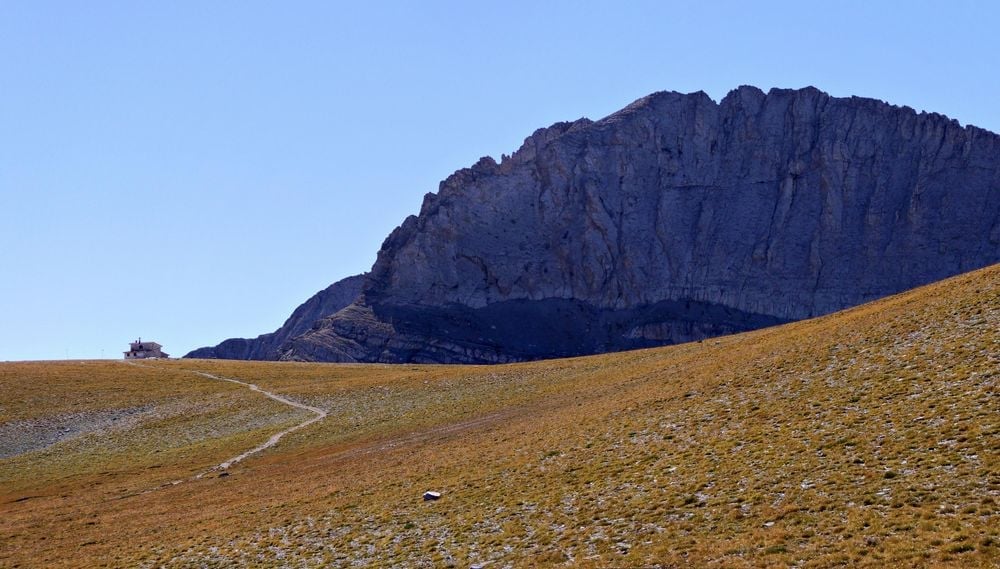
- Distance: 12km
- Walking Time: 8-9 hours
- Ascent profile: 268m up, 1800m down
Over breakfast, your guide will decide which summit you are going to attempt to climb based on the weather and the fitness and ability of the group.
There are two options. The first is to climb Skala Peak at 2,882m and then cross a narrow ridgeline over to Skolio Peak at 2,911m. This is the most commonly reached peak on Mount Olympus. The full summit of Mytikas at 2,918m is more challenging to reach, with exposed scrambling which requires a level head.
We can see the northern reaches of the mountain, the snow patches around the valleys, and the most amazing view of the Aegean Sea.
"The day before we head to the peak, we'll have a group briefing, and check the weather to decide whether we or going up Mytikas or another peak," says Athanasios. Whichever peak you are ascending, it's going to be an early start.
"Most of the time at 7am, we are ready to go. We take breakfast at 6am, and then in July or August we start at 7am and in September or October we start at 7.30am - because it's a little bit cold. Then we have time to relax at the summit."
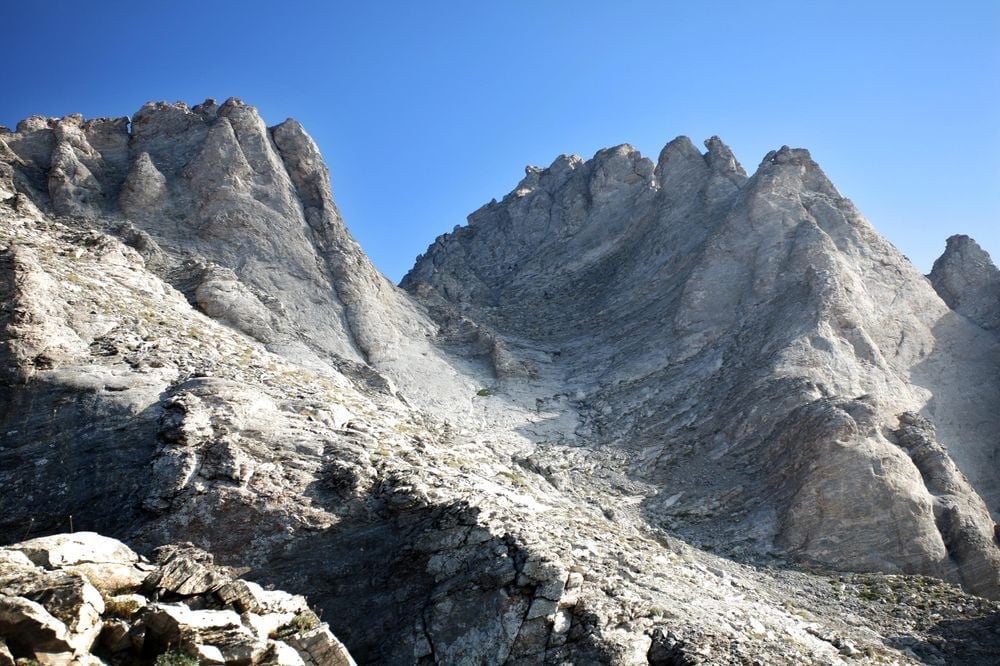
The view from the summit is a view out of all of Greece - and beyond.
"The view is 360," says Pitenis. "You can turn around and around and around."
"The first thing you should do is to look for Zeus and see if he is very close to us on Stefani Peak. From Mytikas, the throne of Zeus is very close. So first we look around for the 12 Gods. Then as we look around we see the south slopes, which are smoother slopes, we can see the northern reaches of the mountain, the snow patches around the valleys, and the most amazing view of the Aegean Sea.
"Early in the morning, we have amazing views out over the national park and the Aegean Sea. Soon, it's a miracle - believe me - when you stand on the highest point in Greece and the second highest point in the Balkans - and have this amazing view. You relax, you take a breath, and you watch the golden hour. For me, every time is different. I've been up to the summit more than 100 times in the last five years. But it is different every time. I try to go up whenever I have time."
You'll descend with fresh views and continue down the Gkortsia trailhead - a different trail than you climbed up the previous day.
"You'll find mountain reeds, and you can see the Aegean Sea [as you descend]. It's a completely different landscape, left and right. You'll pass Petrostrouga Hut, where you refill your water bottles and prepare your muscles and your knees for the last part. It's an amazing route." From there, it’s back to Litochoro.
Check out the full Mount Olympus climb itinerary on our adventure page.
Mountain Refuges on Mount Olympus
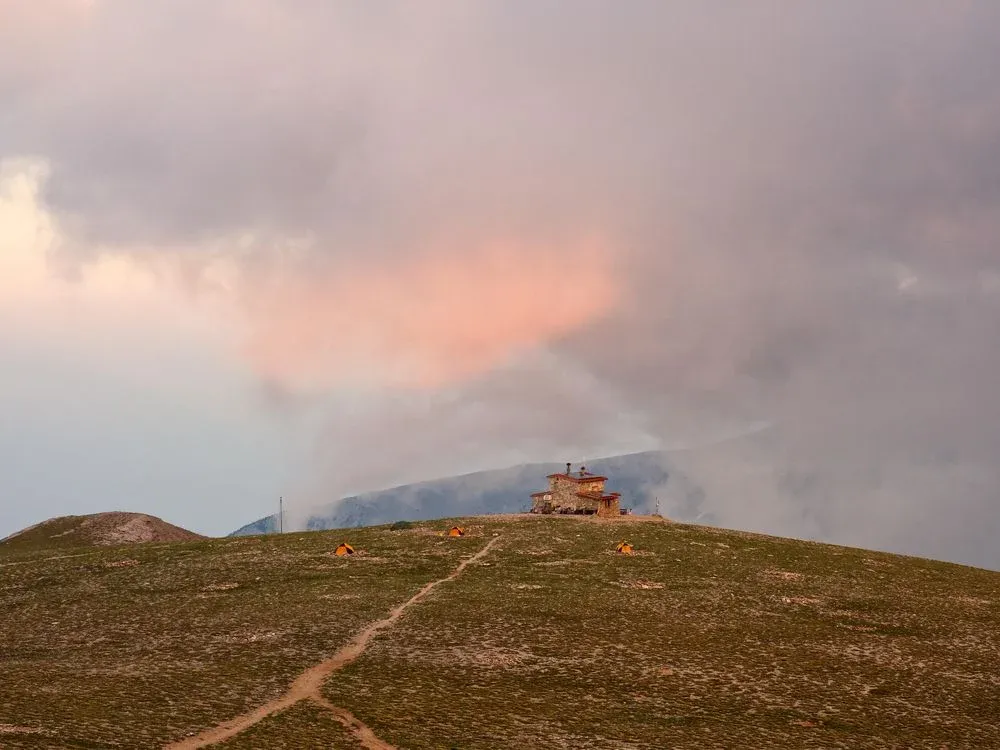
There are eight mountain refuges along the main routes of the Olympus slopes. They tend to be open all year, and booking in advance is reccomended.
- Spilios Agapitos Refuge (2,060m)
- Giosos Apostolidis Refuge (2,697m)
- Christos Kakkalos Refuge (2,650m)
- Petrostrouga Refuge (1,920m)
- Vrysopoules KEOAX Refuge (1,820m)
- Koromilia Refuge (1,020m)
- Krevatia Refuge (1,005m)
- Dimitrios Boundolas/Stavros Refuge (930m)
"We have two refuges that we use on our first night up at the Muses Plateau," says Athanasios Pitenis. One option is the Christos Kakkalos refuge, and the other is the Giosos Apostolidis Hut, which is the highest in the Balkans, up at 2,700m.
"You can find all the facilities there that you'd find at a small guesthouse," says Athanasios. "There are dormitories from six to 15 beds. We have beds, and then downstairs we have a kitchen and a living room where you can spend time. You can find some electricity there and you can find three or four main dishes each day - like spaghetti with meatballs and sauce, a kind of potatoes with beef, and probably soup or maybe scrambled eggs as well.
The most tasty spaghetti is up at 2,700m after a full day of hiking! Trust me.
"You can order these main dishes, you can order salads, like a Greek salad or similar and you can also get drinks here like coffee or alcoholic drinks. You can order what you want. The most tasty spaghetti is up at 2,700m after a full day of hiking! Trust me.
"After the dinner you can stay outside with a cup of coffee and enjoy the view."
Why Was Mount Olympus Important to the Greeks?
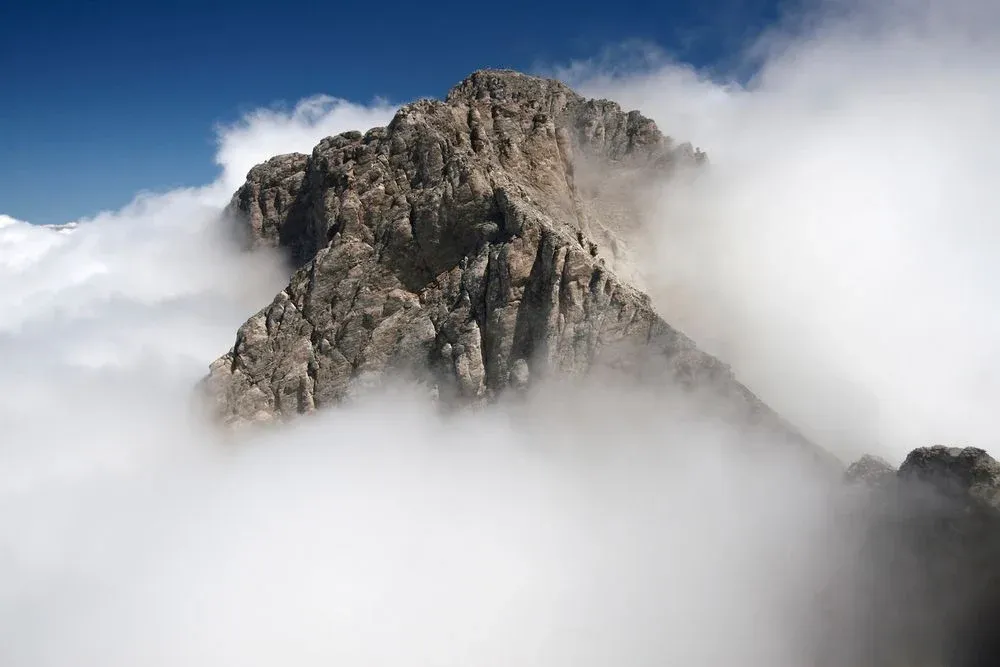
The history and mythology surrounding Mount Olympus is as much of a reason to climb the mountain as the scenery.
"Mythology and Mount Olympus are one and the same," says mountain guide Athanasios Pitenis. "When you start hiking up you feel it. You feel all of this - about the 12 Gods, about the Enipeas River, about the peaks, about all the mythology of the area. Our guides know how long ago it was all created, not only from the scientific point of view, but from a mythological point of view. They know the stories of the fights with a cyclops, and all this. This trip includes a beautiful story of the 12 Gods. It's not only the hiking, but you hike around the myths."
There are few mountains in the world that can stand up to Mount Olympus in terms of romanticism or folklore. It is “the mountain of the gods” after all. This mountain was literally thought to be the place where the ancient gods of Greece looked down on society each morning and decided who was going to be defeating centaurs and who was going to be accidentally standing in Pegasus poo.
In Homer’s Odyssey (6.42) he speaks of ‘Οὔλυμπο’ / ‘Oulumpos’, as the seat of the gods, without specifying a peak. Olympus was dreamt of as being a high mountain top, constantly shrouded from human eyes by clouds, and so, in most regions in Greece, the highest point of elevation was once named some variant of “Olympus”. Being the tallest of all of them, it’s no surprise that the name stuck for the great Mount Olympus.
Olympus was known as the home of the 12 Olympian gods of the ancient Greek world. They are, in full: Zeus, Hera, Poseidon, Demeter, Athena, Apollo, Artemis, Ares, Aphrodite, Hephaestus, Hermes, and either Hestia or Dionysus.
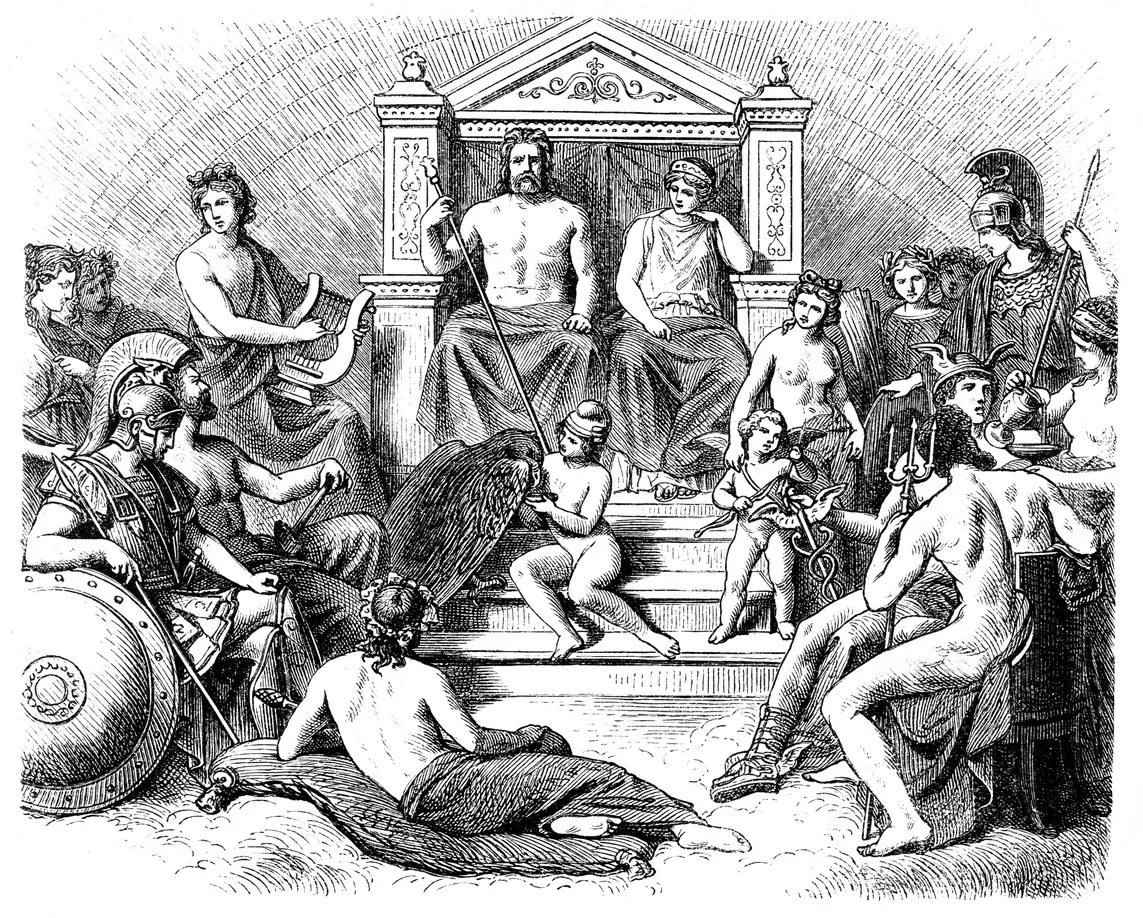
The Olympians were deities - supernatural beings - and tended to be third or fourth generation immortal. They were worshipped as the principal gods of the Greek pantheon and gained their supremacy in a 10-year war of gods, in which Zeus led his siblings to victory and rule over the previous generation of gods – known as the Titans. According to folklore, it was this battle between the new gods and the Titans which actually shaped Mount Olympus.
Zeus, god of the sky, lightning, thunder, law, order and justice, was the king of the gods and ruler of Mount Olympus. He was the youngest child of the Titans Cronus and Rhea, and was also the brother and husband of Hera (times have certainly changed in that respect) and brother of Poseidon, Hades, Demeter and Hestia.
They gained their supremacy in a 10-year war of gods, in which Zeus led his siblings to victory and rule.
Hades was also a major Greek god, but his realm was the underworld, as far from the lofty heights of Olympus as one could be. As such, he wasn’t considered an “Olympian” and isn’t counted as one of the 12 ancient gods of Greece who presided on Mount Olympus. So you’ll be glad to hear that you shouldn’t be bumping into Hades, god of the dead and the king of the underworld, on your hike.
It was said that the tables in Zeus’ palace on Olympus were made of gold and were automations created by Hephaestus. So there is a chance that you’ll see some solid golden tables wandering about the mountain by themselves.
Mount Olympus Greek Mythology: The Tale of Bellerophon
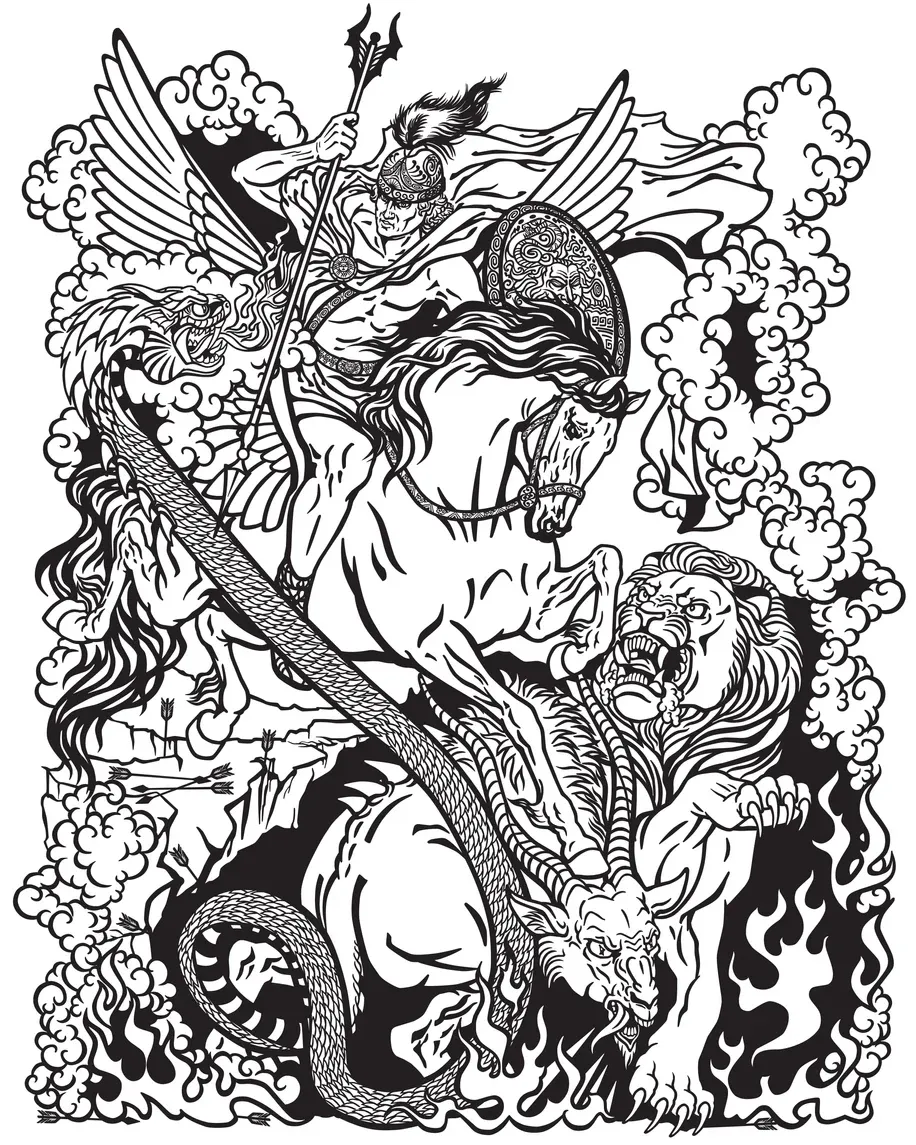
The legends once claimed that no human could actually climb Mount Olympus - something now proven incorrect. Naturally, though, where humans are forbidden, at least one or two of us will inevitably try and reach. Enter Bellerophon.
Bellerophon was a Greek hero who was banished from his home after accidentally killing his own brother. He fled to Tiryns, where he was eventually sent on a quest by the King to attempt to slay the Chimera, a fire-breathing monster who was part lion, part goat and part serpent. Bellerophon was expected to die in his efforts but, after taming the divine winged-horse Pegasus, he successfully slayed the Chimera.
Due to his success, the King (who, as you may be gathering, didn’t like Bellerophon) then sent the poor hero on further quests to try and kill him. But Bellerophon prevailed - defeating pirate ogres, Amazons and even avoided direct assassination attempts organised by the King. He began to get a reputation with the gods as a result, and was eventually recognised as “the son of a god”.
A while after this, having got a little too big for his boots, Bellerophon decided to try and fly Pegasus to the top of Mount Olympus, where he would preside with the gods. He flew to the gates but, upon seeing him, Zeus sent a gadfly to sting Pegasus, who bucked Bellerophon off his back. The hero then fell from his horse and back down to Earth (literally). He didn’t die, but he did live out the rest of his days blinded, alone and in misery.
Don’t worry, though. None of that should happen to you on Mount Olympus. Unless you’ve annoyed Zeus recently. You haven’t, have you? Be careful up there.
Read more:
- Tracking Wild Bears in Greece: A Photo Story
- How Samaria Gorge Became a Haven for Freedom Fighters
- An Adventure Guide to the Greek Islands
Inspired? Check out our two-day hike up Mount Olympus, or have a look at our full range of adventure holidays in Greece!

